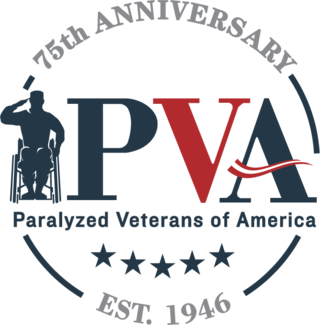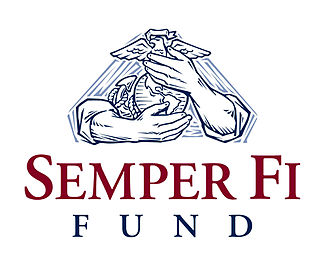
The U.S. Army Medical Command (MEDCOM) is a direct reporting unit of the U.S. Army that formerly provided command and control of the Army's fixed-facility medical, dental, and veterinary treatment facilities, providing preventive care, medical research and development and training institutions. On 1 October 2019, operational and administrative control of all military medical facilities transitioned to the Defense Health Agency.

The Dental Corps of the United States Navy consists of naval officers who have a doctorate in either dental surgery (DDS) or dental medicine (DMD) and who practice dentistry for Sailors and Marines to ensure optimal oral health.
An employee assistance program (EAP) is an employee benefit program that assists employees with personal problems and/or work-related problems that may impact their job performance, health, mental and emotional well-being. EAPs generally offer free and confidential assessments, short-term counseling, referrals, and follow-up services for employees. EAP counselors may also work in a consultative role with managers and supervisors to address employee and organizational challenges and needs. Many corporations, academic institution and/or government agencies are active in helping organizations prevent and cope with workplace violence, trauma, and other emergency response situations. There is a variety of support programs offered for employees. Even though EAPs are mainly aimed at work-related issues, there are a variety of programs that can assist with problems outside of the workplace. EAPs have grown in popularity over the years, and are more desirable economically and socially.
The role of the Commando Logistic Regiment (CLR), Royal Marines is to provide second line Combat Service Support to 3 Commando Brigade.

The Paralyzed Veterans of America is a veterans' service organization in the United States of America, founded in 1946. The organization holds 33 chapters and 70 National Service Offices in the United States and Puerto Rico. It is based in Washington, D.C. The organization was founded in 1946 by a band of service members who came home from World War II with spinal cord injuries. These service members wanted to live with independence and dignity and as contributors to society, so they created the organization to be governed by its members, veterans of the armed forces living with spinal cord injury or disease such as multiple sclerosis (MS) and amyotrophic lateral sclerosis (ALS), also known as Lou Gehrig’s disease.
Rape crisis centers (RCCs) are community-based organizations affiliated with the anti-rape movement that work to help victims of rape, sexual abuse, and sexual violence. Central to a community's rape response, RCCs provide a number of services, such as victim advocacy, crisis hotlines, community outreach, and education programs. As social movement organizations, they seek to change social beliefs and institutions, particularly in terms of how rape is understood by medical and legal entities and society at large. There is a great deal of diversity in terms of how RCCs are organized, which has implications for their ideological foundations, roles in their communities, and the services they offer.

The Carl R. Darnall Army Medical Center is a United States Department of Defense medical facility at Fort Hood, Texas. It provides medical care to servicemembers and their families, along with veterans and their dependents, in and around the largest U.S. military installation in the world. Named after inventor of water chlorination Brigadier General Carl Rogers Darnall, MD., the core of the medical center is a state of the art 947,000-square-foot hospital. The facility opened in 2016, and includes a full primary care and emergency medical facility, including a level III trauma center, and specialized care in obstetrics and gynaecology, orthopedics, and behavioral health. The hospital provides treatment to nearly 3,000 patients daily. The medical center is one of the largest in the Military Health System, comprising more than 105 buildings in addition to the main facility, spread over Fort Hood, three local communities, and a clinic at the Red River Army Depot in Bowie County, Texas, outside of Texarkana. The medical center and its outlying facilities are staffed nearly entirely by uniformed servicemembers of the U.S. Army, however in 2019, the administrative control of the facility was shifted from United States Army Medical Command to the Defense Health Agency, an integrated joint Department of Defense combat support agency. All patients of the facility are insured and billed through Tricare, the health insurance system of the DoD. The medical center is led by Colonel Richard G. Malish.

The Madigan Army Medical Center, located on Joint Base Lewis-McChord just outside Lakewood, Washington, is a key component of the Madigan Healthcare System and one of the largest military hospitals on the West Coast of the United States.
The President's Commission on Care for America's Returning Wounded Warriors, also known as the Dole-Shalala Commission, was established on March 6, 2007, when U.S. President George W. Bush signed Executive Order 13426. The Commission was established to examine and recommend improvements to the effectiveness and quality of transition from a return to military service or civilian society, health care, benefits, outreach to Service members, and awareness by Service members of health care and benefits programs.
Merlin German was a United States Marine sergeant stationed in Iraq who survived a roadside bomb blast in 2005. He became a symbol of recovery throughout the United States, soon known as the "Miracle Marine," during the 17 months he spent hospitalized following the blast. German eventually regained the ability to walk, and set up a charity for child burn victims. Just over three years after the blast, he died following a minor skin graft surgery.

The Army Wounded Warrior Program (AW2) is the official U.S. Army program that assists and advocates for severely wounded, ill or injured Soldiers, Veterans, and their Families and Caregivers, wherever they are located, regardless of military status. Soldiers who qualify for AW2 are assigned to the program as soon as possible after arriving at the Warrior Transition Unit (WTU). AW2 supports these Soldiers and their Families throughout their recovery and transition, even into Veteran status. Through the local, personalized support of AW2 Advocates, AW2 strives to foster the Soldier's independence. There are more than 20,000 severely wounded, ill and injured Soldiers and Veterans currently enrolled in AW2.

Wounded Warrior Project (WWP) is an American charity and veterans service organization that offers a variety of programs, services and events for wounded veterans of the military actions following September 11, 2001. It operates as a nonprofit 501(c)(3) organization.
The Defense Centers of Excellence for Psychological Health and Traumatic Brain Injury (DCoE) is a United States Department of Defense (DoD) organization that provides guidance across DoD programs related to psychological health (PH) and traumatic brain injury (TBI) issues. The organization's official mission is to "improve the lives of our nation’s service members, families and veterans by advancing excellence in psychological health and traumatic brain injury prevention and care."
Magee Rehabilitation Hospital, part of Jefferson Health, founded in 1958, is a 96-bed specialty medical rehabilitation hospital providing physical and cognitive rehabilitation services. Magee's flagship facility is located in Center City Philadelphia. In addition to the main campus that offers comprehensive services for spinal cord injury, brain injury, stroke, orthopaedic replacement, amputation, pain management and work injury, Magee provides an expanding outpatient network serving the surrounding communities. In 1985, Magee's brain injury rehabilitation program became the first in the nation to be accredited by the Commission on the Accreditation of Rehabilitation Facilities. Magee partnered with Jefferson Hospital to create one of the nation's 14 federally designated centers for spinal cord injury rehabilitation. Magee has been rated one of America's leading rehabilitation hospitals by U.S. News & World Report. Magee provides treatment to more than 5,000 individuals annually. Magee is authorized to treat wounded military personnel returning from war. Magee is not an Obligated Group Affiliate.
The Naval Center for Combat and Operational Stress Control (NCCOSC) is a U.S. Navy Medicine organization established to promote psychological health in the U.S. Navy and Marine Corps. It is a culturally relevant center that leverages sound medical knowledge to improve resilience, preserve psychological health, improve care for sailors, marines and their families and facilitate Navy Medicine research efforts on psychological health and traumatic brain injury.
Sentara Northern Virginia Medical Center (SNVMC) is a 183-bed, for-profit community hospital serving Prince William County and its surrounding communities. Potomac Hospital, an independent, non-profit community hospital, merged with Sentara Healthcare in December 2009 and is now known as Sentara Northern Virginia Medical Center (from April 16, 2012). The SNVMC market has experienced tremendous growth since the opening of the hospital in 1972.
Segs4Vets, a continuing program which began in 2005, is a grass-roots effort sustained and administered by volunteers in the United States that provide Segway PT vehicles to disabled United States military personnel. The program which made its first presentation in September 2005 to three recipients who had sustained injuries in Operation Iraqi Freedom (OIF), was conceived and implemented with the assistance of Gen. Ralph "Ed" Eberhart, USAF (Ret), President of the Armed Forces Benefits Association.
The Colorado Department of Labor and Employment (CDLE) connects job seekers with great jobs, provides an up-to-date and accurate picture of the economy to help decision making, assists workers who have been injured on the job, ensures fair labor practices, helps those who have lost their jobs by providing temporary wage replacement through unemployment benefits, and protects the workplace — and Colorado communities — with a variety of consumer protection and safety programs.

Semper Fi Fund is a non-profit 501(c)(3) organization that provides a variety of programs to assist wounded veterans in all branches of the United States Armed Forces. The organization describes its mission as "providing urgently needed resources and support for post-9/11 combat wounded, critically ill and catastrophically injured members of the U.S. Armed Forces and their families." As of November 2019, the Semper Fi Fund has issued 209,000 grants totaling $210 million in assistance to 24,000 service members and their families.
Howard Center is a Burlington, Vermont-based nonprofit organization that offers professional crisis and counseling services to children and adults; supportive services to individuals with autism and developmental disabilities who need help with education, employment, and life maintenance skills; counseling and medical services for those struggling with substance use disorders; and interventions and supports for adults with serious and persistent mental health challenges in Chittenden County, Vermont's most populous county. Howard Center collaborates with many community partners and is a funded agency of the United Way of Northwest Vermont.









